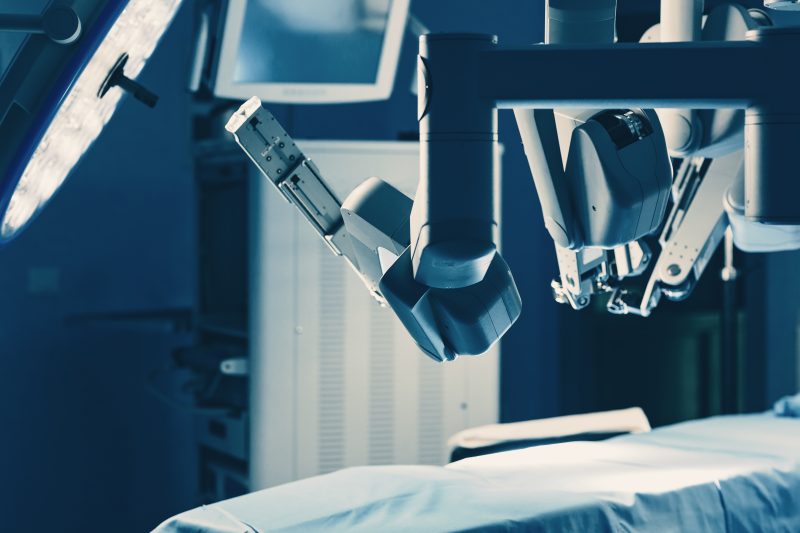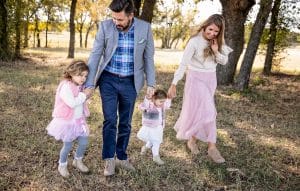PUBLISHED: 7th December 2020

by Renee Mallonee
I am proud to be the first patient in the world to have a robotic mastectomy using the Single Port da Vinci Robot!
Genetic Testing At 21
I discovered my BRCA2 mutation when I was 21. (I'm now in my mid-30s.) The lifetime risk of breast cancer is 55 percent for women with this mutation. It was troubling to know that I was essentially “doomed” (that's how I looked at it).
I thoroughly researched prophylactic mastectomy when I found out about my mutation. Some doctors encouraged me to have surgery right away, while others recommended waiting until I had a family. I wasn't ready then, and I'm grateful I had the opportunity to wait. Every six months I alternated having an MRI and mammogram/ultrasound. (Mammograms are no longer recommended until after age 30 due to radiation exposure.) It gets exhausting (and expensive). And with dense breast tissue, especially at a younger age, there are often many false positives. I had a few biopsies, which also take an emotional and physical toll. All of this monitoring eventually helped me to think more seriously about prophylactic surgery.
The Road to My Decision
Knowing about my mutation for so long let some of the emotion fade, which allowed me to be more practical in my decision-making. I wanted to eliminate as many risks as possible and feel more confident that I could be there for my family, including my two beautiful little girls.
When I started researching again several years later, I wanted someone who was on the cutting edge of breast cancer research and advancements, especially for hereditary breast cancer. As a previvor, you don't have cancer, which is the primary focus of breast surgeons and oncologists. Many breast oncologists were aware of my BRCA mutation, but they seemed uneducated when it came to providing recommendations. That led me to be the first patient in an FDA-approved clinical trial of robotic mastectomy at UT Southwestern. I was confident in my doctors, and I felt they would give me the attention I needed and deserved.
The Single-port Robotic Mastectomy
Robotic mastectomies have been conducted for several years in France using the da Vinci robotic system with multi-ports (multiple arms). The single-port (single arm) procedure has been used for other types of surgeries, but it is relatively new for mastectomy. In a robotic mastectomy, an incision is made and the breast tissue is removed, just as it is in a traditional mastectomy. A breast surgeon manipulates the tools on the single robotic arm from a small area outside the operating room. Robotic mastectomy has many potential benefits: its less invasive, more precise, creates a smaller incision (about 1.5 inches compared to 5-9 inches) and healing is faster than traditional mastectomy.
My Mastectomy and Reconstruction
I opted for mastectomy with immediate breast reconstruction. I had A-cup breasts, and I wanted to be a small C-cup. My plastic surgeon encouraged me to get tissue expanders. Although I would need subsequent surgeries, this would allow me to customize my breast size and have more aesthetic control after the initial surgery.
I had my mastectomy in February 2020. The surgery went well and took just under six hours. My recovery went well too. I had minimal bruising and stayed in the hospital for one night. During the first month my drains were removed and my expanders were filled to the desired size. My doctor was hopeful that the robotic procedure would provide breast sensation, but in my case it did not. My second surgery in mid-May swapped out the expanders for breast implants. I also had fat grafting to supplement the implant area and minimize rippling in the implants. In October, I had one last round of fat grafting and my fallopian tubes were removed to reduce my risk of ovarian and fallopian tube cancers.
Recovery and Beyond
I attribute my successful recovery to my family and friends who gave me the emotional strength I needed. My husband was outstanding. My parents and in-laws helped with everything. Friends created a meal-train and dropped by to check in. I am truly so blessed to have had this love and support. There are some downsides, but I'm working through accepting these.
All in all, I'm incredibly happy I took the risk. I'm so glad the surgery is behind me, and that now I can look forward!
My full story is available on my website: roboboobs.com. I’ve also submitted more detailed photos to the FORCE photo gallery.
Note: If you are looking for a clinical trial for hereditary cancer prevention or treatment, visit the Search and Enroll in Research section of our website
1 Comments
December 9, 2020
Wow Renee, what a brave story that had to be such an emotional drain for you and your family. Glad you made it through with such a long happy life ahead of you. Thanks for sharing.
Joe Copeland
Reply